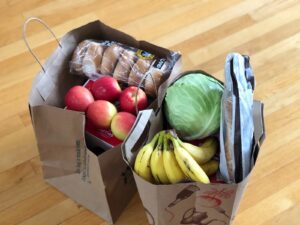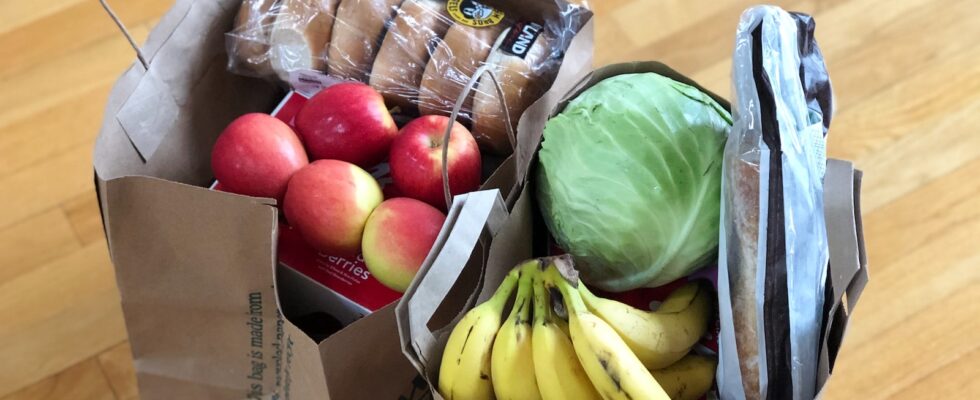 During COVID grocers managed an unprecedented level of online orders for fulfilment via delivery and click and collect. The challenges during this time related mostly to lack of delivery slots and product/labour shortages impacting ability to fulfil orders in a timely manner (or at all)
During COVID grocers managed an unprecedented level of online orders for fulfilment via delivery and click and collect. The challenges during this time related mostly to lack of delivery slots and product/labour shortages impacting ability to fulfil orders in a timely manner (or at all)
With a return to in-store shopping demand for online services has become more manageable. But digital remains an important and growing channel. Grocers must once again focus on the fundamentals of meeting (or exceeding) customer expectations to ensure they continue to win and retain customers. Research conducted by PublicisSapient in Europe, and reflected here in Australia, shows the most common pain points with digital grocery orders:
- Did I get my entire order with no substitutions or missing items?
- Do my fresh items have a decent shelf life?
- Did I have a great delivery or pickup experience?
Failure to address these challenges is driving dissatisfaction with digital grocers. Even more serious, it’s driving reductions in brand loyalty. While Australia doesn’t offer the choice of grocers as Europe and the US, the impacts and costs associated with brand switching can still be significant.
So what can retailers do to address these customer frustrations?
1. Improving order accuracy
Customers frequently experiencing missing items is a serious problem. One issue is the visibility of in-stock products several days or hours before the actual picking and delivery date. This is also known as available-to-promise (ATP), a system that’s often not present on grocer websites.
Without a robust ATP, online grocers end up offering products they cannot deliver. These products often include top sellers, items on promotion with limited quantities or products impacted by unusual demand patterns. This problem is particularly acute when products are picked by in-store shoppers and by online pickers, combined with a lack of live inventory or no regular inventory refresh. Not only do customers end up dissatisfied, but the average order value (AOV) and profitability of the overall order are negatively impacted.
By having a robust ATP system and algorithm, as well as improving forecasting with better data and ordering systems, online grocers can improve fulfilment rates. This includes optimising online product range to increase the availability of core items. Grocers can focus their product range on high-performing SKUs that generate most of their sales and eliminate under-performers, enabling better supply chain performance on the remaining SKUs.
2. Improving produce shelf life
According to customer research, shelf life at home is the second most important predictor of customer churn. In-store customers typically reach to the back of a shelf to get the item with the longest expiration date. But online shoppers can’t do this, and thus end up with products with a shorter fridge life – or even already spoiled and unusable. This results in lower satisfaction and higher food waste.
Grocers can help minimise waste with better storage techniques. This might include changing the layout to one shelf life date for critical items with a “first-in, first-out” (FIFO) policy. For non-critical items, caged-off inventory and top-to-bottom stacking of crates can help prevent “last-in, first-out”. A more robust quality assurance (QA) process is a final line of defence, stopping visually spoiled items from being delivered.
3. Improving customer interaction experience
Th moment of delivery or pick up is an important customer interaction that can be a significant factor in building loyalty and converting neutral customers into promoters. Was the driver or store employee friendly and on time? Did thy help bring bags into the home or vehicle? While it was standard practice to leave bags outside during COVID lockdowns, there can now be more engagement and interaction.
With delivery, online grocers need to invest more in training their drivers in customer interaction. Equipping them with route optimisation technology is also important in planning more efficient routes, allowing dwell time or drops-per-route to be increased. The same applies to click-and-collect, where customers are less willing to accept a clunky experience with long queues. Solutions that flag customers’ ETA or their geolocation on the premises can help staff prepare the order in advance.
The online grocery market is changing at an unprecedented speed. Recent IPSOS research commissioned by PS and Salesforce shows that the majority of Australian grocery retailers are investing in supply chain as a priority. But not all of this investment is geared towards addressing the top customer pain points. It’s important that digital grocery retailers keep the customer at the heart of such investments to ensure they can win and retain customers both now and into the future.
By Bradley Grinlinton, Publicis Sapient
This article was first published by Inside Retail
